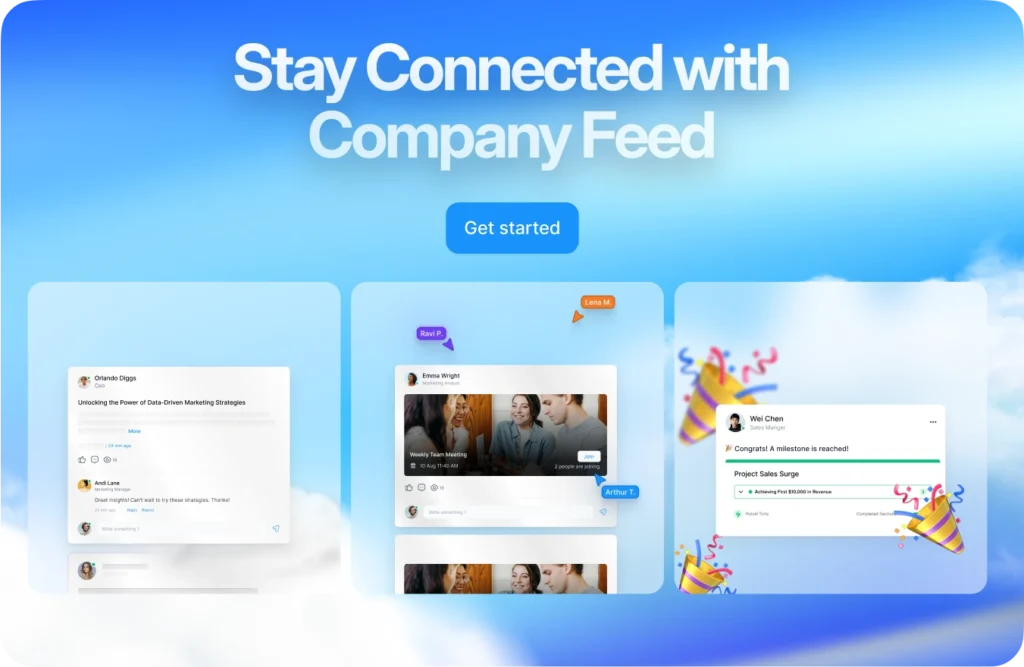7 Must Remote Team Communication Activities and Icebreakers

Effective communication is crucial for remote teams to thrive. Building strong relationships and fostering a sense of unity can be challenging when team members are not physically present. To overcome this, engaging in various communication activities and icebreakers can significantly enhance team dynamics. These activities not only help team members get to know each other better but also create an environment of collaboration and trust, which is essential for achieving common goals.
In this blog post, we will explore seven essential remote team communication activities and icebreakers that can transform your team into a cohesive and productive unit. By integrating these activities into your routine, you can ensure that your team remains connected, motivated, and efficient, regardless of physical distance.
Why Remote Team Communication Matters?
The Role of Communication in Team Productivity
Clear and consistent communication is the lifeline of any team. It ensures everyone understands their responsibilities and contributes to achieving collective goals. Miscommunication, on the other hand, can derail projects, causing delays and frustration. For instance, studies show that teams with strong communication are 25% more productive. Tools like Slack and Zoom enable seamless exchanges, but the activities shared below take productivity to the next level by building camaraderie and alignment.
Building Trust and Engagement in a Virtual Environment
Trust is the bedrock of team success, especially when working remotely. Without physical presence, teams must rely on transparent communication to foster relationships. Engagement can be cultivated through consistent check-ins, recognition, and creative virtual meetups. A connected team is an engaged team—and engagement fuels motivation, leading to outstanding results.

Challenges of Remote Team Communication
Time Zone Differences
When team members are spread across multiple time zones, scheduling becomes tricky. A simple activity like a group brainstorming session may require careful planning to accommodate everyone’s availability. One solution is to embrace asynchronous communication tools like Loom, where team members can record their inputs instead of requiring live attendance.
Lack of Non-Verbal Cues
In physical offices, body language and facial expressions play a significant role in communication. Remote setups often lack this richness, leading to misunderstandings in tone or intent. Video calls and emojis can help bridge this gap, adding a touch of personality to virtual conversations.
Overcoming Virtual Fatigue
Too many back-to-back video calls can leave team members drained, impacting their creativity and focus. To tackle this, implementing time-saving strategies with the help of smart meeting practices can keep productivity high without the burnout.
What are the 7 Team Communication Activities and Icebreakers?
Here, we outline seven activities and icebreakers that can help improve communication among remote teams. These activities are designed to be fun and engaging, promoting interaction and bonding among team members.

1. Create Video Conferencing
Video conferencing is a powerful tool for remote teams, providing a platform for face-to-face interactions. Regular video meetings help team members see each other’s expressions and body language, which are vital components of effective communication. These meetings can be used for team updates, brainstorming sessions, or simply catching up, helping to create a sense of presence and immediacy.
To make video conferencing more engaging, incorporate interactive elements such as virtual backgrounds, polls, or screen-sharing. Encourage team members to turn on their cameras and participate actively. This not only enhances communication but also helps build a stronger connection among teammates.
2. Virtual Team Pursuit
Virtual team pursuit games are a fun way to promote teamwork and communication. These games typically involve solving puzzles or completing challenges as a team, requiring members to collaborate and communicate effectively to succeed. They can be played through various online platforms and are an excellent way to break the ice and get team members working together.
Such activities encourage problem-solving and strategic thinking while fostering a sense of camaraderie. By working towards a common goal, team members can build stronger relationships and improve their ability to communicate and collaborate in work-related tasks.
3. Try to Escape from Escape Room As a Team
Virtual escape rooms have gained popularity as a team-building activity for remote teams. In these games, team members must work together to solve a series of puzzles and riddles to “escape” from a virtual room within a set time limit. This requires effective communication, teamwork, and quick thinking, making it an excellent way to strengthen team bonds.
Participating in a virtual escape room can help team members practice their problem-solving skills and learn to trust and rely on each other. It also adds an element of excitement and adventure, making it a memorable and enjoyable experience for the entire team.
4. The Desert Island
The Desert Island game is a classic icebreaker that can be easily adapted for remote teams. In this activity, team members are asked to imagine they are stranded on a desert island and must choose a limited number of items to survive. Each person shares their choices and explains their reasoning, sparking interesting discussions and revealing personal insights.
This game encourages creativity and critical thinking while allowing team members to learn more about each other’s personalities and preferences. It can also lead to humorous and engaging conversations, helping to break down barriers and build rapport.

5. Movie Night
Hosting a virtual movie night is a relaxed and enjoyable way for team members to unwind and bond. Choose a movie that everyone agrees on, and use a streaming platform with a watch party feature to view it together. After the movie, have a group discussion to share thoughts and reactions, fostering a sense of community and connection.
teMovie nights provide an opportunity for team members to engage in a shared experience outside of work. Creating these types of casual virtual hangouts can significantly improve team management and foster stronger interpersonal dynamics.
6. Coffee Gift
Sending coffee gifts or virtual coffee vouchers to team members is a thoughtful way to show appreciation and encourage informal communication. Arrange virtual coffee breaks where team members can chat casually over a cup of coffee, similar to what they might do in a physical office setting.
These informal interactions help to build relationships and create a more relaxed and friendly work environment. It provides a break from work-related discussions and allows team members to connect on a personal level, which is essential for fostering a supportive team culture.

7. Create Weekly Video Conferencing with Peerbie
Weekly video conferences using a platform like Peerbie can help maintain regular communication and keep everyone aligned. These meetings can be used to discuss ongoing projects, share updates, and address any issues or concerns. It provides a structured way for team members to stay connected and engaged.
Incorporate team-building activities or icebreakers into these weekly meetings to make them more interactive and enjoyable. This also reinforces the principles of remote collaboration that help distributed teams stay connected and aligned.
Effective communication is the backbone of any successful remote team. In fact, many remote collaboration tools are specifically designed to enhance virtual communication and ensure seamless teamwork across locations. By incorporating these seven activities and icebreakers into your routine, you can enhance communication, build stronger relationships, and create a more cohesive and productive team. Remember, the key to success in a remote work environment is to keep team members engaged, connected, and motivated.n a positive team dynamic and ensures that everyone feels involved and valued.

